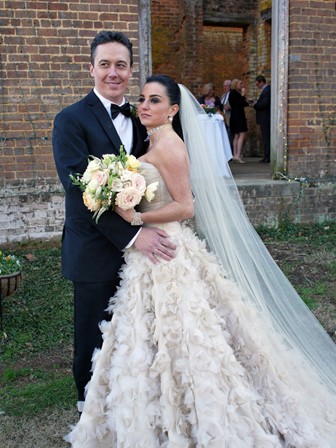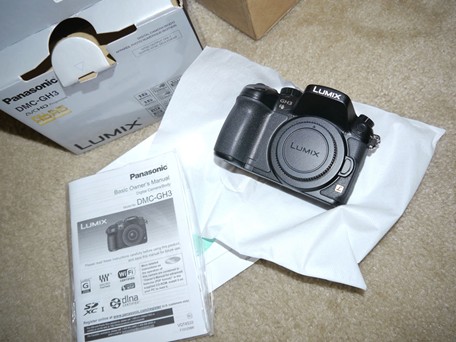I started shooting wedding videos over 10 years ago after filming a friend’s wedding, editing it on my PC and giving him a VHS copy which after showing his parents he proceeded to call me on the phone to tell me “My mom is crying her eyes out… You should do this for a living!” Since that time I’ve shot on nearly every format and every kind of camera including BetaSP for CBS, DV, MiniDV, Hi8 and HDV. A few years ago I saw the industry moving toward a tapeless acquisition medium so we invested in Panasonic AVCHD cameras the HMC150 and HMC40. I remember over 8 years ago telling co-workers “Just wait… one day we’ll be filming on small cameras and recording directly to computer chips!”
Back in 2007/2008 I saw wedding videos showing something entirely new. Shallow depth of field. That cool look I could achieve only with the big chip DV cameras after adjusting back  focus and zooming in was being done up close in a dressing room! They were doing it with this new DSLR the Canon 5D MKII. The folks using this camera had to do a lot of workarounds to fit it into their workflow. They needed eye pieces called “loupes” to be able to see the screen on the back that was intended for photo viewing after you took a photo. The audio was subpar so they needed to record to an alternative capture device. The camera only recorded to 12 minute segments so you had to babysit it and keep a watch out for the camera stopping so you could restart it, then you had to sync multiple huge files (because the codec used to record was elementary so it created huge files) in post to match up multiple cameras. The camera wouldn’t auto-focus while shooting video. Needless to say it was far from ideal from a videographers perspective. I really wanted that look and started researching to find the ideal option for my workflow and needs. I loved the look of the Canon’s but hated the workarounds you needed to do just to use the things. Then one day in April of 2009 while hanging out over at the DVXUser forums I found this little gem. The Panasonic Lumix GH1 was announced. Here was a DSLR-like camera with unlimited record times, the AVCHD codec so smaller file sizes, an articulating LCD so no need for a “loupe” or external monitor, a stereo mic with decent sound quality, auto focus during shooting video. Wow… nearly every drawback of shooting with Canon DSLRs addressed! Plus I was already shooting on AVCHD so I was very familiar with editing the files in Edius which allowed me to edit them in real-time with no rendering! A dream come true!
focus and zooming in was being done up close in a dressing room! They were doing it with this new DSLR the Canon 5D MKII. The folks using this camera had to do a lot of workarounds to fit it into their workflow. They needed eye pieces called “loupes” to be able to see the screen on the back that was intended for photo viewing after you took a photo. The audio was subpar so they needed to record to an alternative capture device. The camera only recorded to 12 minute segments so you had to babysit it and keep a watch out for the camera stopping so you could restart it, then you had to sync multiple huge files (because the codec used to record was elementary so it created huge files) in post to match up multiple cameras. The camera wouldn’t auto-focus while shooting video. Needless to say it was far from ideal from a videographers perspective. I really wanted that look and started researching to find the ideal option for my workflow and needs. I loved the look of the Canon’s but hated the workarounds you needed to do just to use the things. Then one day in April of 2009 while hanging out over at the DVXUser forums I found this little gem. The Panasonic Lumix GH1 was announced. Here was a DSLR-like camera with unlimited record times, the AVCHD codec so smaller file sizes, an articulating LCD so no need for a “loupe” or external monitor, a stereo mic with decent sound quality, auto focus during shooting video. Wow… nearly every drawback of shooting with Canon DSLRs addressed! Plus I was already shooting on AVCHD so I was very familiar with editing the files in Edius which allowed me to edit them in real-time with no rendering! A dream come true!
In 2009 we added the little GH1 to our stable as a third camera and quickly discovered it was much more than that. It was producing images that were BETTER than the full size cameras, with a fast lens it was better in low light too! The only problem is the AVCHD codec was crippled for consumer devices because this camera was made by the consumer division so if the detail was very high in the scene the codec couldn’t keep up and you got what was commonly referred to as “mud” in the image. Overall the quality was still so much better than the big cameras that we quickly replaced them with GH1’s. A forum member named “Tester13” over at the DVXUser forums was working on a hack for the GH1 to allow it to record at higher bitrates. He succeeded in doing so and I tried many of the hacks and while they did improve the quality and drastically reduced the “mud” they proved to be unstable for long record times for me. I needed the most reliable formats for shooting once in a lifetime events like weddings. The GH1 had a successor in 2010.. The GH2! With slightly higher bitrate and a few more options it was the obvious choice as an upgrade so I snagged one early in December of 2010. It was great! Gone was the “mud” but it still had a few minor issues… notably some banding at higher ISO low light scenes, and a slight green color shift when the record button was pressed. It wasn’t perfect, but it was much better. After two years of shooting exclusively with the GH2’s we were getting excited about the prospects of a new camera… the GH3.

With the newly released (December 2012 but still hard to get as it’s sold out everywhere) Panasonic Lumix GH3 improves over it’s predecessor in many ways which I’ll list here and explain the benefits for our particular shooting style filming mostly weddings/events. First, Panasonic added many more formats including .mp4 and .mov along with it’s AVCHD offerings. They also added 1080/60P which only a few other DSLRs used for weddings today offer. In fact, the Canon 5DMKII, MKIII, 60D, and the new 6D don’t offer it. Nor does the Nikon D800 or D600. In fact, you’d have a hard time finding a DSLR being used for wedding/events that DID offer 1080/60P from ANY manufacturer. What does this mean for you, the customer? Well, now we can shoot steadicam (stabilized) footage at full 1920X1080 at 60 full frames per second, then tell our NLE (editing software) to treat it as 24P footage for perfect frame accurate slow motion. They also added a headphone jack, higher bitrates, a new improved OLED LCD with better auto focus, touch autofocus with tracking. We can now track a subject while shooting with a steadicam! Improved low-light performance, built in wifi… speaking of the built in wifi, this is really cool. We can control the camera remotely with any android or Apple device, take pictures, record video, monitor and make adjustments including focusing and white balance adjustments. Perfect for Jewish weddings because we can mount the camera in the Chuppah and operate it remotely! After taking pics and/or video we can use the application on our phone to transfer the images/video to the device then upload them to social media. It’s weather sealed, much more professionally built with a solid aluminum frame and the battery is larger. Large enough in fact to last nearly all day on a wedding shoot. They improved the dynamic range (the amount of detail in the shadows and highlights) so even the darker footage looks better.
I’ve shot with the Canon Mark II, Mark III, 60D, 7D and the Nikon D800 and this camera is easily the best DSLR I’ve ever shot with. Video doesn’t feel like a last minute add-on. It was designed to be a true hybrid camera, merging photography and video acquisition into a single package. It does them both very well.
